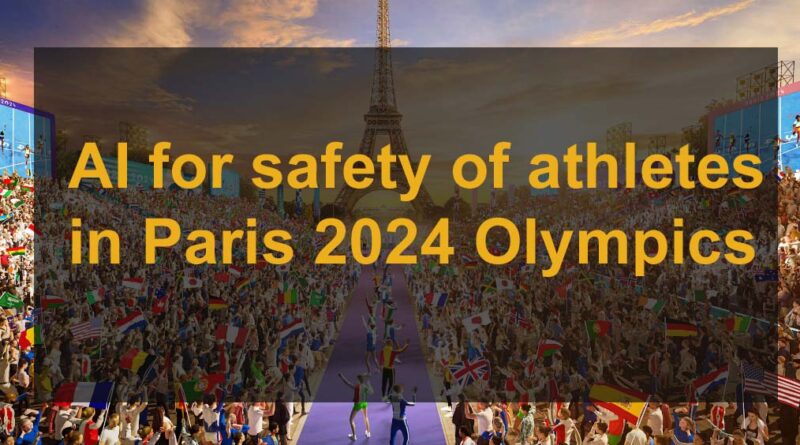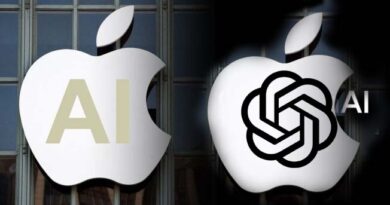AI for safety of athletes in Paris 2024 Olympics
AI for safety of athletes in Paris 2024 Olympics
Relying on the AI at the Paris 2024 Olympics as a means of safeguarding athletes is one of the developments in the direction of enhancing athletes’ safety.
Therefore, this technology makes it possible for coaches, trainers, and even organizers to make some decisions such as preventing the occurrence of injuries, improving performance, and adopting better techniques and safety measures.
So, with an AI at their plate, athletes are able to do their best and make the whole world look at them.
This AI will work on social media platforms X, Instagram, Facebook as well as Tik Tok, and the nasty comment section will be erased as soon as possible.
It is trying to protect 15,000 participants from any form of cyberbullying, trolling, stalking, etc.
The Importance of Athlete Protection
AI for public safety is revolutionizing how athlete protection is approached for major sporting events like Paris 2024. The integration of AI technology ensures heightened safety measures and real-time monitoring to safeguard athletes.
Real-Time Monitoring and Threat Detection
AI for public safety plays a crucial role in real-time monitoring and threat detection.
This allows security personnel to respond swiftly, ensuring athletes are protected from any potential risks. The implementation of AI for workplace safety in these scenarios ensures that athletes are not only focused on their performance but also feel secure.
Enhancing Health and Injury Prevention
By analyzing data from wearable devices, AI can detect signs of fatigue or potential injury risks. This proactive approach to athlete safety, akin to AI for construction safety, helps in timely intervention, reducing the likelihood of severe injuries and ensuring athletes remain in peak condition throughout the competition.
Emergency Response Optimization
In emergencies, the role of AI for public safety becomes even more pronounced. AI systems can optimize emergency response times by providing real-time data and predictive analyses. This ensures that medical teams and security personnel can act quickly and efficiently, minimizing the impact of any incidents. Moreover, AI for safety enhances the coordination among various teams, ensuring a seamless and effective response to any emergencies.
Privacy and Ethical Considerations
While the benefits of AI for public safety are significant, it is essential to address privacy and ethical considerations. The use of AI for workplace safety and public spaces must AI for safety be balanced with respect for individual privacy rights.
Ensuring transparency in data usage and implementing strict privacy protocols are crucial steps in maintaining trust and protecting athletes’ personal information.
In conclusion, AI for public safety is transforming how athlete protection is managed, offering innovative solutions for real-time monitoring, health management, and emergency response. As we look forward to Paris 2024, the integration of AI technology will play a pivotal role in ensuring a safe and secure environment for all athletes, reinforcing the AI for safety importance of athlete protection in the modern sporting world.
“`html
Role of AI in Public Safety
AI for public safety is transforming the way large-scale events, such as the upcoming Paris 2024 Olympics, are managed to ensure the well-being of athletes. By leveraging advanced technologies, AI systems can predict potential safety hazards and respond rapidly to any emergencies.
Enhanced Surveillance and Monitoring
AI-powered surveillance systems provide real-time monitoring to detect and analyze unusual activities. These systems can identify potential threats and suspicious behavior, ensuring that appropriate security measures are taken to protect athletes.
Predictive Analytics for Risk Management
This includes everything from identifying structural AI for safety weaknesses in venues to predicting crowd movements, allowing for proactive measures that enhance athlete safety.
AI for Workplace Safety in Training Facilities
AI technologies are also pivotal in ensuring the safety of athletes in training facilities. From monitoring equipment use to detecting environmental hazards, AI for workplace safety helps in maintaining a secure, injury-free training environment.
AI for Construction Safety in Olympic Venues
As construction continues on various Olympic venues, AI for construction safety plays a significant role in preventing accidents. AI systems can monitor construction sites in real-time, predicting and mitigating risks to ensure the venues are built under the safest conditions.
Smart Emergency Response Systems
AI-enhanced emergency response systems ensure that any incidents are addressed swiftly and effectively.
These systems can coordinate with medical teams, security personnel, and local authorities to provide immediate support, thus safeguarding athletes during emergencies. In conclusion, AI for public safety offers a comprehensive approach to ensuring the protection of athletes during the Paris 2024 Olympics. By integrating AI technologies in surveillance, predictive analytics, workplace safety, and construction safety, organizers can create a safer environment for all participants.
“`
AI Technologies Enhancing Athlete Safety
The implementation of AI for public safety is revolutionizing the approach to athlete protection at major sporting events, including the upcoming Paris 2024 Olympics. This advanced technology is not only fortifying public safety but also playing a AI for safety pivotal role in ensuring the well-being of athletes.
Real-Time Monitoring and Injury Prevention
Artificial Intelligence is being leveraged to monitor athletes in real-time, thereby enhancing workplace safety for sports professionals. Wearable sensors equipped with AI capabilities can track vital signs, movements, and exertion levels. This proactive approach exemplifies the use of AI for safety in high-stakes environments like sports.
Enhanced Decision-Making and Emergency Response
AI’s role in public safety extends to emergency response and decision-making processes.
In the context of sports, AI systems can quickly analyze vast amounts of data to support medical teams and event organizers in making informed decisions. For instance, AI for safety AI can assess the severity of an injury and recommend the best course of action, ensuring timely medical intervention.
This application mirrors the advancements seen in AI for workplace safety, where swift and accurate responses are crucial.
Optimized Training and Recovery Protocols
Training regimens and recovery protocols are also benefiting from AI-driven insights. By analyzing performance data, AI can help devise personalized training plans that minimize the risk of injury.
Similarly, AI can track recovery progress and suggest adjustments to ensure optimal rehabilitation. This is akin to the application of AI for construction safety, where data-driven strategies are employed to enhance worker safety and efficiency.




